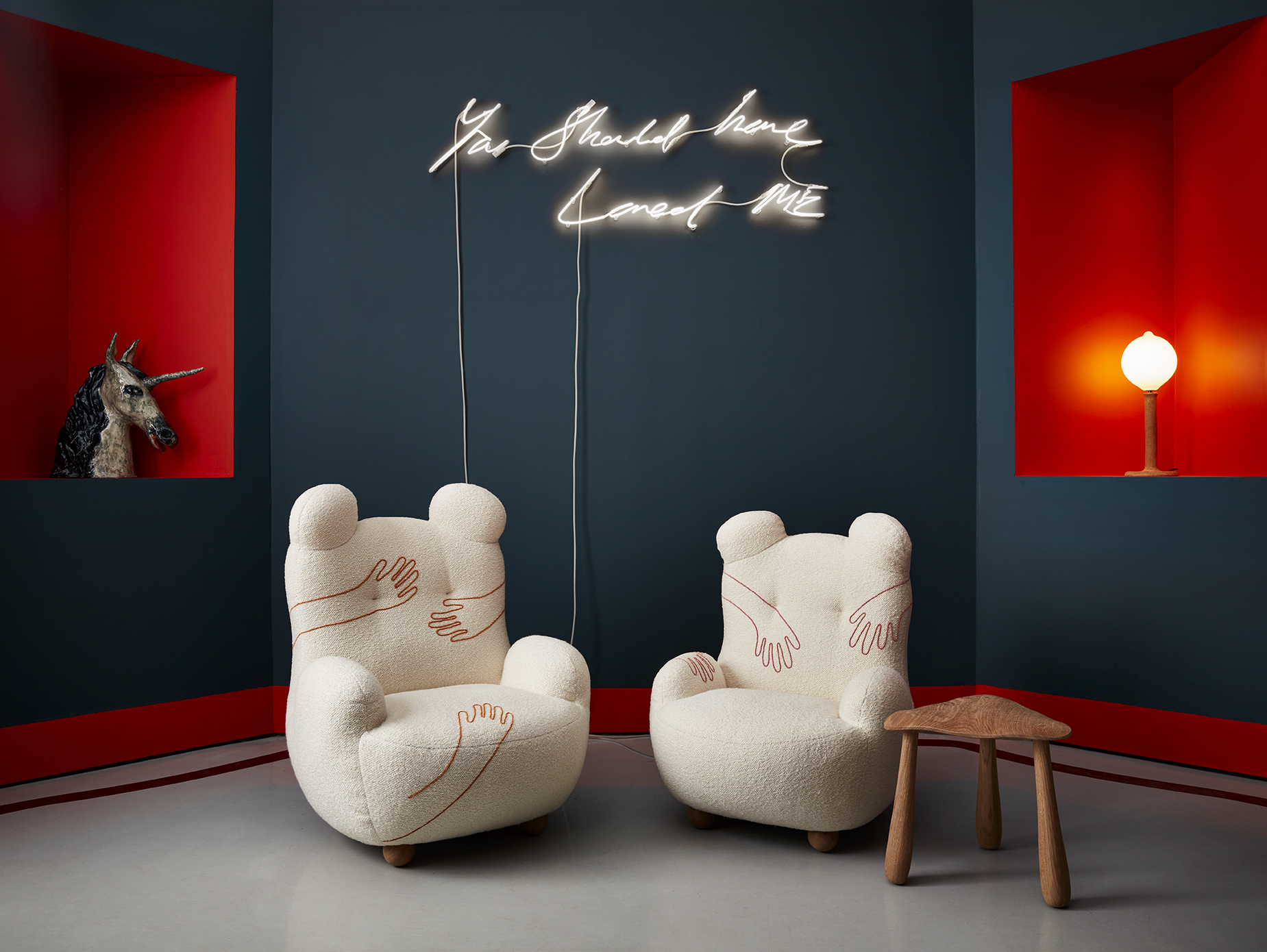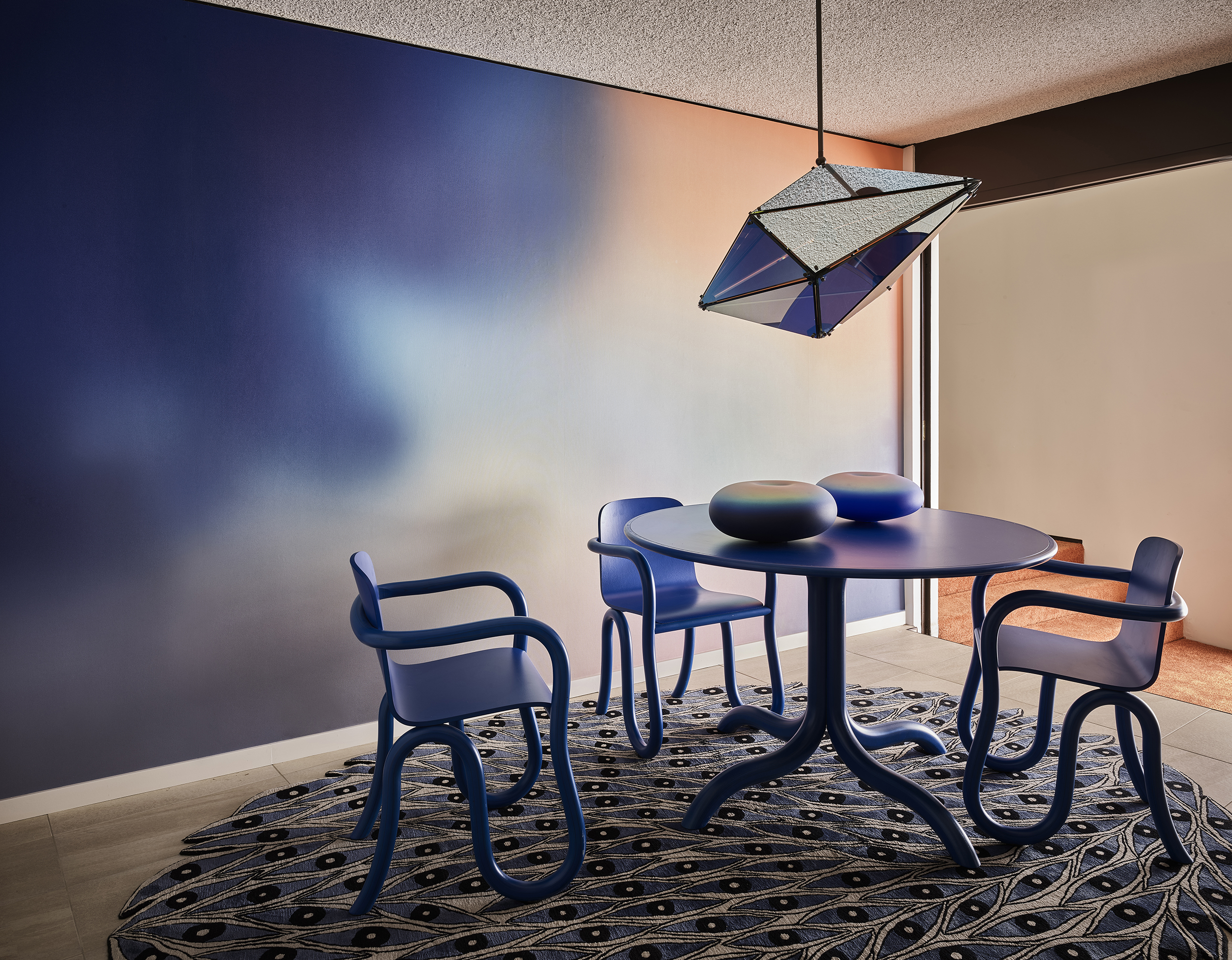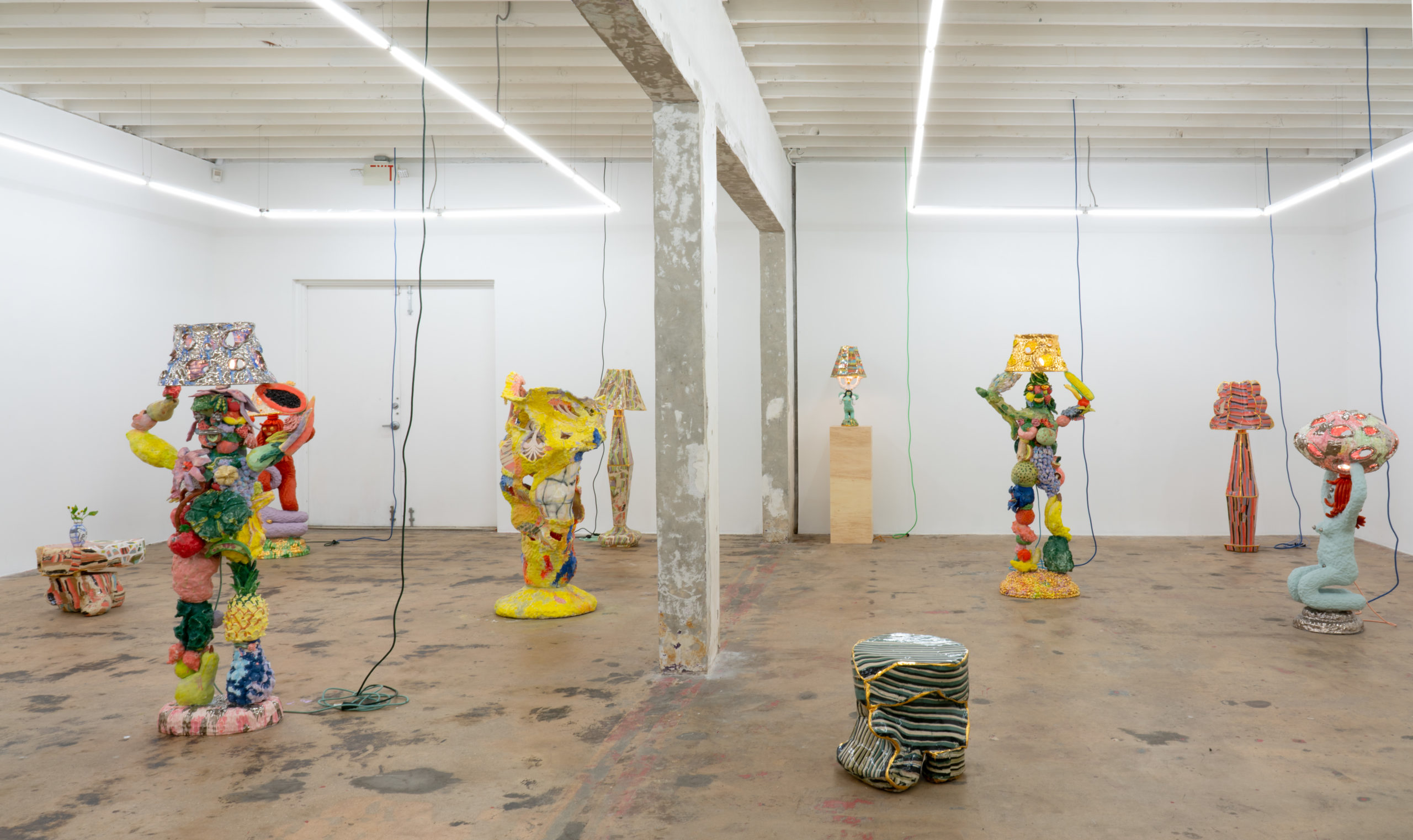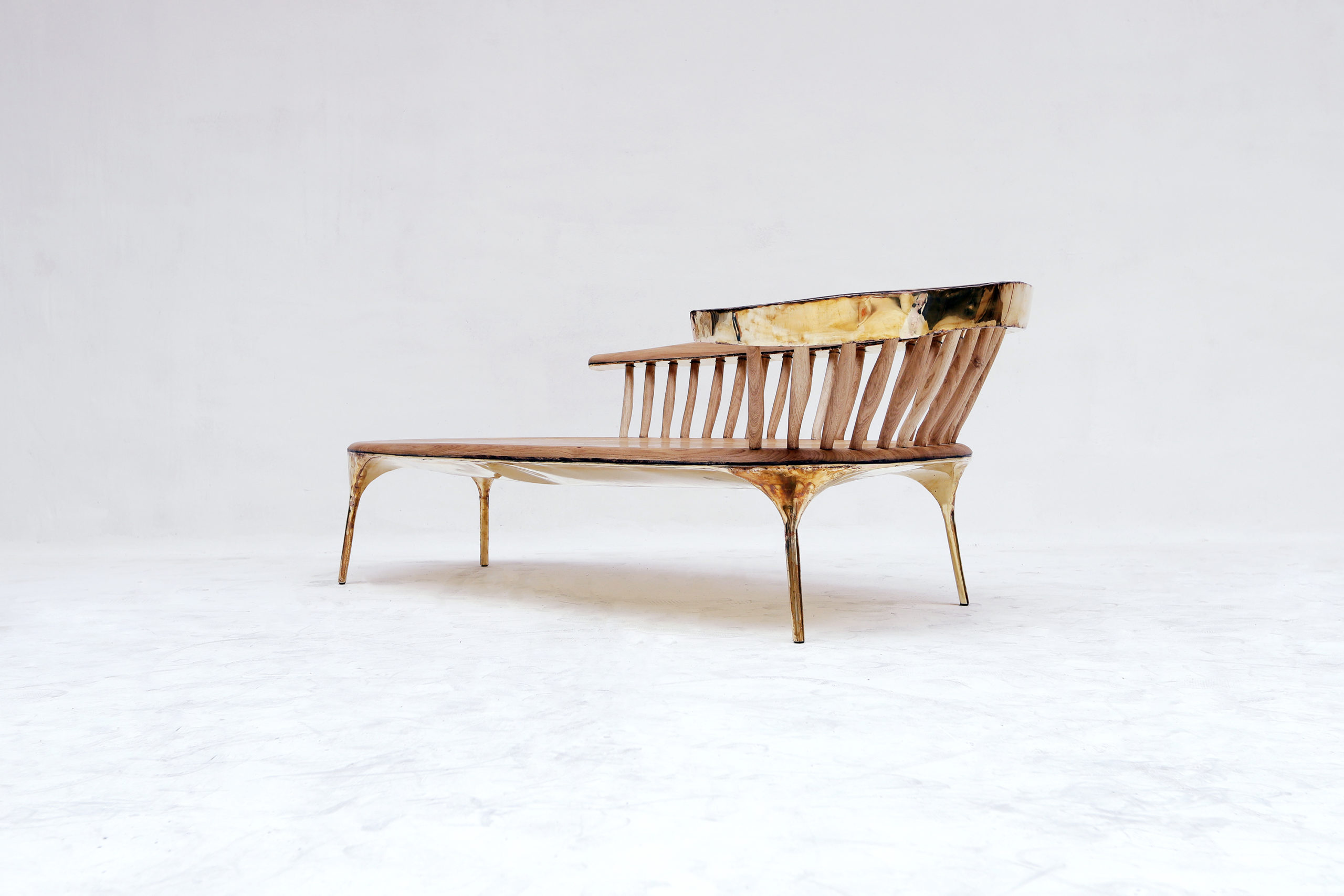Over the past two decades, a new type of design has taken shape. The contemporary collectible design market has combined the vintage market’s tradition of connoisseurship and the art world’s commercial structure with the experimental fervor of the early postmodern and studio craft movements. A select group of galleries, fairs, and museums and a growing collector base have tapped into the potential of collectible design, initially as an extension of fine art but increasingly as a domain that stands on its own.
Unlike standard product design, this type of output is characterized by artistic expression and limited production. Mass appeal and salability are not as important. Rather, individual designers are given free rein to conceive new one-off pieces that express their own personalities and outlooks. Often their works push the boundaries of material, form, function, and aesthetics.
As contemporary collectible design becomes more established, it’s gaining wider cultural influence. This transformation has brought with it a whole host of new complexities, both advantageous and challenging. To paint a full picture, AN Interior’s editor Adrian Madlener spoke to four industry experts.

“A lot has changed in the past two decades,” Friedman Benda gallery associate director Alex Gilbert said. “There’s been more of a crossover. Artists are conceiving design and designers are being formally recognized by the art world, which reinvigorates itself by dabbling in design. Both sectors are expanding and so one can conjecture that the two would converge at some point.”
“There’s no question that the collectible design market is modeled on the art market,” historian, journalist, educator, and adviser Daniella Ohad said. “What changed in the past two decades is that art collectors realized that they could have the best paintings, but if they didn’t have furniture to complement them, their homes would be impersonal.”
“Most design collectors are also art collectors,” Gilbert added. “However, the notion of buying for investment is still not quite as present in the design market. A majority of what is acquired is still based on necessity. Whereas it would seem normal for an art collector to amass paintings, it wouldn’t make sense for a design collector to buy three coffee tables if they only needed one.”
“The market emerged out of the auction houses,” Ohad said. “In the early 2000s, Phillips dedicated some of its decorative arts programming to renowned designers like Ron Arad and Marc Newson. With the economic crash of 2008, the market shifted to independent galleries and the annual fairs that began to bring them together. But before that, there was a strong emphasis on vintage or secondhand design and in particular midcentury modern pieces, which weren’t available for very long due to a limited supply. The market needed to search for work elsewhere and began focusing on living talents who were creating contemporary work.”

“The vintage decorative art market was always thought of as a stepchild to the fine arts,” midcentury modern design expert, dealer, and curator Mark McDonald said. “And yet, what we dealt with was the concept of rarity. Our strength was the ability to go to different parts of the world and do the legwork, to source pieces by historic makers that in some cases collectors didn’t know existed. There was a certain glamour associated with visiting different cities in the world to uncover hidden gems.”
“Back in the early 2000s, New York still had streets dedicated to galleries selling midcentury furniture,” writer and former Modern Magazine editor in chief Beth Dunlop said. “Because of the emergence of the internet and online sales platforms like 1stdibs, but also because many of the dealers retired, most closed in that time. With the 2008 economic crash and the emergence of the Brooklyn makers movement, the market shifted almost entirely to young independent designers who relied on galleries to get started rather than larger brands.”
“Being able to work with living designers in the past two decades has created a different type of market,” Gilbert said. “As gallerists, we are first and foremost representatives, and at times partners. However, we also invest time, money, and knowledge—technical assistance—to help our talents in their ventures and make sure their visions come to fruition. Many of these initiatives are years in the making and without some sort of armature, they would be a lot harder to realize. Our support extends to production, publishing, logistics, and curatorial introductions, as well as educational and residency opportunities.”
“It’s a lot easier to deal with things that are being made now, that you can control in terms of production and special commissions, and to work with people who are alive. The concept of rarity, supply and demand, can also be manipulated now,” McDonald said. “The playing field has been leveled. Nobody sees anything strange about placing a 1930s Art Deco desk next to a piece by contemporary designer Katie Stout.”

“It’s so interesting how rapidly the world of people who appreciate collectible design has grown, but it’s not just collectors, because there isn’t that much out there to be collected,” Dunlop said. “If there were only 40 important painters in the world, there wouldn’t be any art collections. There are only a few dozen talents working this way. However, a wider culture has been created around this type of design.”
“The culture has changed in the way that media and social media have played up the 15 minutes of fame trope,” McDonald said. “Young talents with over 25,000 Instagram likes think that they will be the ones who are going to be written about, and in 50 years they will be—those were the things that were groundbreaking. As historians working in vintage, such sources are important to us, and so it seems bizarre to us how this scholarship is being watered down for future generations. Collectors have also gotten less rigorous in terms of research and rely on the media to guide their choices.”
“I sometimes worry that design’s going the way of art,” Dunlop said. “It feels like there’s a fear that a chasm is growing between the worlds of collectible design and everyday design. At the same time, collectible design is able to bring up the value of design and help support young talents pushing new ideas.”

“What design is being asked to do today is more complicated, more difficult, than the purely aesthetic, technically evolutionary, or craftsmanship-oriented questions that drove connoisseurship in the past,” Gilbert said. “Design that is about self-expression or commenting on the world is something new and something people are interested in supporting. Design Miami is a major arbiter of this movement. Collectors are increasingly aware of this quality, as are major institutions. Museums have become more ambitious in terms of acquiring larger and thought-provoking works. It’s no longer about the isolated object.”
“I always advise my clients to buy work that is going to have historic value in the future,” Ohad said. “By that, I mean works that are not only innovative or trendy at the time but that are going to last as statement pieces. When people look back at our time in 50 years, they can cite these objects as having had a major impact on design. The term collectible design is thrown around a lot. It should only be used to describe work that we can foresee as keeping and increasing in value over time. The challenge is finding pieces that have perspective and that are truly original.”
Header image: During the 2019 edition of the Design Miami fair, New York’s Friedman Benda gallery teamed up with renowned artist, architect, and fashion designer Daniel Arsham on a fully immersive installation modeled after his Long Island home. Furnished with a number of personal artifacts, the self-referential staging also included reinterpreted design classics embroidered with personal annotations. (Daniel Kukla/Courtesy Friedman Benda and Daniel Arsham)
